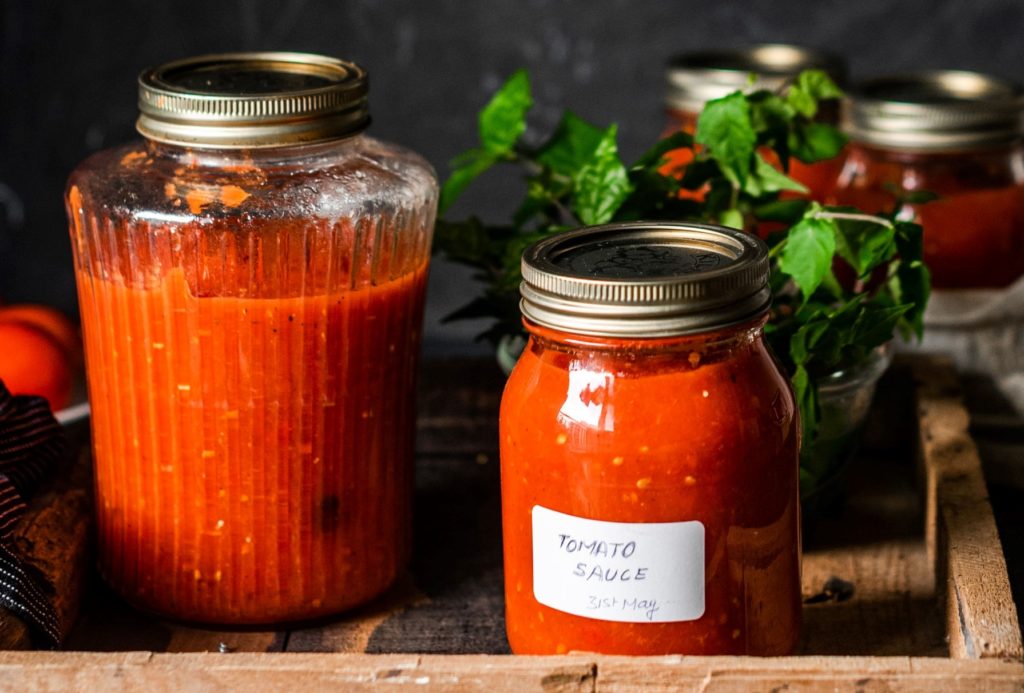Top 4 Foods for Uncanny Health Benefits…

A Short Can Goods List of the Best Foods to Can for Survival
I love the idea of filling my pantry with healthy foods in case of an emergency. A well-stocked pantry consists of a variety of canned, jarred, and dried food items, as well as some basic staples, and plenty of distilled drinking water.
Ideally there is room in your pantry for at least a 2-month supply of food and water.
As far as canned foods go, I’m not a big fan of the extreme processing and high amounts of sugar and salt usually added to these foods. Instead of buying some canned foods, consider a DIY project, and preserve some of your foods in mason jars at home. They’re a lot tastier and also better for you.
Here’s what you’ll need for your canning project:
- A large deep sauce pot with a lid and rack or a canning bath- to sanitize jars and lids
- A pressure cooker for soups, meats, or veggies- foods with *low acidity
- Canning jars with new lids and seals to store your foods and keep them fresh
- A knife to cut your fruits or veggies into pieces that will fit in your jars
- A ladle and a wooden spoon to scoop and stir when you need to
- Fresh ingredients that you plan to can
- A jar lifter to safely remove the hot jars from their bath
- Canning funnel to help transfer ingredients into the jars with less mess
- Silicone spatula or bubble freer and headspace tool
*recipes for canning specifically ensure the proper acidity or they’ll recommend using a pressure cooker
In my humble opinion, the items below are the best things to can. If you’re able, these are the canned goods that you should stock up on whether for survival or just to have in your pantry for use in your weekly meal planning.
So, without further ado, here are my top 4 picks of foods to preserve…
1. Peaches (leave the skin on)
There’s nothing quite like a fresh ripe juicy peach… except jarred peaches. When it comes to food, eating fresh is best; but when it comes to peaches, jarred ripe peaches with their skins on bear an uncanny resemblance to fresh.
Not only do they taste great, but they’re robust and
their nutritional content remains virtually in tact when jarred.
Since peach skin is thin and holds some nutrients in its own right, go ahead and leave the skin on. Peaches offer an array of nutritional benefits, providing many vitamins and minerals and aiding in digestive and heart health in surprising ways.
They’re delicious to eat on their own, but they also make a great addition
to either sweet or savory dishes… yum!
2. Tomatoes
Many vegetables can be dried to take up less room in your pantry while still preserving their flavor and nutrition. With jarred tomatoes, on the other hand, you can make sauces for pasta, rice, and bean dishes that other vegetables can’t rival. Preserve them alone and/or jar your favorite sauces and enjoy some of your favorite tomato-based dishes during times of scarcity.
Tomatoes are nutrient dense; in particular, they’re a rich source of lycopene
which is useful in warding off different types of cancers and cardiovascular diseases.
3. Raw Honey
Honey is a multi-purpose food. It’s an excellent sweetener containing trace vitamins, minerals, and enzymes.
Did you know honey can actually serve as an addition to your first aid kit too?
It’s antimicrobial properties and gelatinous consistency make it a decent salve to treat minor burns and cuts. It’s also effective in easing sore throats and coughs from common colds.
Honey has beauty benefits too.
This viscous gold pulls dirt from the pores in your skin. Since honey is a humectant, it then draws moisture into the skin, making this a delicious cleanser and moisturizer all in one.
4. Salmon
There are so many good things to say about salmon.
The delectable pink flesh contains long chain fatty acids that will definitely be missed should supply chains and power grids fail. These fatty acids (aka omega-3s) are essential so you can’t stay healthy without them. Salmon is great for brain, heart, and skin health. Salmon also provides approximately 22-25 grams of high-quality protein (proteins that contain all the essential amino acids) per 3.5 ounces.
Extra precautions are needed when canning salmon
compared to other canning projects though.
There are plenty of reliable sources to find out what’s needed to successfully can salmon safely. Here’s a YouTube demo below:
Preserving food is easier than you think.
So, give it a try and savor the healthy benefits.
© Cherie Fournier 2021
